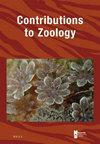温带林地蜗牛的营养生态位大小和重叠受其生活方式和体型的影响
IF 2.2
2区 生物学
Q1 ZOOLOGY
引用次数: 1
摘要
陆地蜗牛代表了森林地面上物种的巨大多样性。一些物种喜欢呆在落叶中,而另一些物种喜欢爬上植被。它们被认为是通才食草动物/分解者。尽管大多数物种的确切营养位置通常很难确定,但假设一个群落中的营养生态位分配率很低。我们使用稳定同位素贝叶斯椭圆比较了四个当地陆地蜗牛组合之间和内部的同位素生态位大小和重叠。我们发现营养生态位大小(用校正的标准椭圆面积表示)与体型和生活方式之间存在显著差异。我们假设,较小和/或树栖蜗牛物种的生态位较大是由于它们的流动性有限和空间结构食物资源的存在。相比之下,落叶来源的广泛和相似的混合物导致较大、高度流动的表观物种个体的均匀饮食,即较小的生态位大小。我们记录了一个群落中物种之间同位素生态位的多次重叠,尽管树栖物种表现出略微不同的生态位位置,表明了特定的饮食。当比较所有成对组合时,我们发现使用不同生活方式的物种的同位素生态位没有重叠,而使用相似生活方式的种群则相反。此外,机会主义者在生活方式方面的营养生态位介于最外层物种之间。我们的结果符合共存蜗牛物种中可变和重叠营养生态位的一般概念。然而,我们能够证明很少占据同一微栖息地的物种之间的差异。本文章由计算机程序翻译,如有差异,请以英文原文为准。
Trophic niche size and overlap in temperate forest land snails are affected by their lifestyle and body size
Land snails represent a large diversity of species in the forest floor. Some species prefer to stay in the leaf litter, while others like to climb up vegetation. They are considered generalist herbivores/decomposers. Although the exact trophic position of most species is often difficult to determine, a low rate of trophic niche partitioning within an assemblage is assumed. We compared isotopic niche sizes and overlaps between and within four local land snail assemblages using stable isotope Bayesian ellipses. We found significant differences in trophic niche size (expressed by corrected standard ellipse area) as a function of body size and lifestyle. We hypothesised that the larger niche size of smaller and/or arboreal snail species is due to their limited mobility and the presence of spatially structured food resources. In contrast, a broad and similar mixture of leaf litter sources results in a homogeneous diet for individuals of larger, highly mobile, epigean species, i.e., smaller niche size. We documented multiple overlaps of isotopic niches between species within an assemblage, although arboreal species exhibited slightly different niche positions, indicating specific diets. When comparing all pairwise combinations, we found that isotopic niches of species using different lifestyle did not overlap, in contrast to species using similar lifestyle. In addition, the trophic niches of opportunists with respect to lifestyle were intermediate between those of species from the outermost categories. Our results fit the general concept of variable and overlapping trophic niches in co-occurring snail species. However, we were able to demonstrate differences in species that rarely occupy the same microhabitat.
求助全文
通过发布文献求助,成功后即可免费获取论文全文。
去求助
来源期刊

Contributions to Zoology
生物-动物学
CiteScore
4.00
自引率
4.50%
发文量
16
审稿时长
>12 weeks
期刊介绍:
Contributions to Zoology solicits high-quality papers in all systematics-related branches of comparative zoology (including paleozoology). Preference will be given to manuscripts dealing with conceptual issues and to integrative papers (e.g., ecology and biodiversity, morphology and phylogeny and character state evolution, phylogeny and historical biogeography, systematics and bioinformatics, bioinformatics and biodiversity, habitat disturbance and biogeography, etc.). Reviews and alpha-taxonomic contributions are considered for publication, but acceptance will depend on their high quality and exceptional nature.
 求助内容:
求助内容: 应助结果提醒方式:
应助结果提醒方式:


